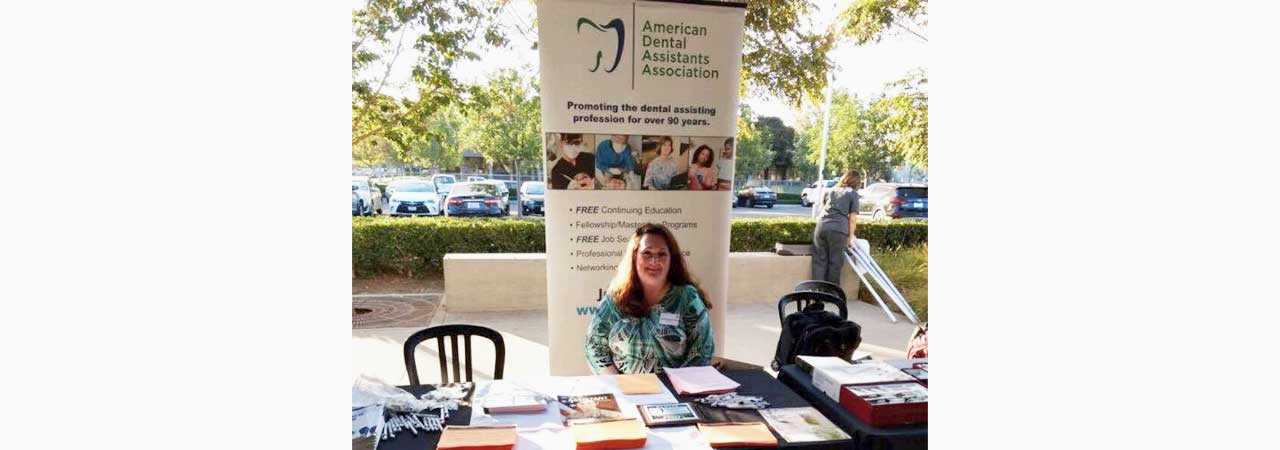Poised for excellence through participation

Why Natalie Kaweckyj recommends both ADAA membership and DANB certification
Natalie Kaweckyj, CDA, COA, CPFDA, CRFDA, CDPMA, COMSA, BA, LDA, RF, MADAA, strongly believes that in addition to holding certification through DANB, all dental assistants should be members of the American Dental Assistants Association (ADAA).
“Part of being a respected professional in any field is maintaining professional membership and holding professional certification,” she says.
Kaweckyj exemplifies this, as she maintains six DANB certifications, holds distinction as an ADAA Fellow and Master, and recently completed her term as immediate past president of ADAA. She believes there are professional development opportunities at every point in a dental assistant’s career.
“Both ADAA and DANB allow so many occasions for growth at all career stages — from the dental assisting student to the retired career dental assistant still interested in maintaining a finger on the pulse of what you need to know in dental assisting,” Kaweckyj states.
The ADAA journey
Kaweckyj joined ADAA in October 1992 and says she enjoyed membership “in name only” for five years. “It wasn’t until I began working on my ADAA Fellowship — which I earned in 1999 — that I met members from my own state, Minnesota, and got involved on the state level,” explains Kaweckyj, who started out serving as her state’s ADAA chapter president in 2002 and then served in that role again from 2005 to 2007. She has held numerous other state chapter positions, including secretary, business secretary and legislative chairperson.
Going on to earn ADAA Mastership in 2004 further elevated Kaweckyj’s career on the national level. She has held a number of national leadership roles in ADAA, including president from 2010 to 2011 and from 2017 to 2018. “I finished my term as immediate past president at the end of October 2020,” she says.
Would Kaweckyj recommend that her motivated peers follow in her footsteps? Absolutely, she says: “Holding Fellowship and Mastership is something that is coveted by many and attained by few. Long a standard of professional achievement, these designations in ADAA are something to strive for as a dental assisting professional.”
The DANB difference
Another key way for dental assistants to demonstrate their knowledge, skill sets and passion for the profession is through earning and maintaining certification through DANB — which Kaweckyj has proudly done for years.
“Becoming a Certified Dental Assistant certificant was a personal choice,” Kaweckyj reflects. “Now, as a career dental assistant, I feel every dental assistant should become DANB certified, maintain their certification and use the credentials proudly.”
The benefits of participation
For Kaweckyj, involvement in both ADAA and DANB only makes sense: “Many dental assistants have already achieved professional excellence by earning a credential through DANB. Why not put your earned credential to use toward a pathway within ADAA Fellowship? Having earned just one DANB credential allows you to earn a credit of 100 to 150 hours toward the 300 credit hours needed for Fellowship — and you have 10 years to complete the requirements as long as active ADAA membership is maintained.”
Beyond finding opportunities for professional advancement through ADAA and DANB, Kaweckyj has enjoyed creating many connections, which she wouldn’t trade for the world. “The networking has provided me with unbelievable opportunities to grow professionally and personally,” she says. “If you haven’t already, I recommend joining ADAA, taking that next step toward ADAA Fellowship, and earning and maintaining DANB certification.”
Learn more
Not yet a member of ADAA? Visit www.adaausa.org for membership information. To enroll in the ADAA Fellowship/Mastership programs, contact Jennifer Porter at j[email protected].

